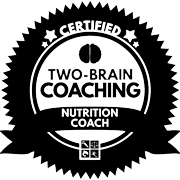I once heard a great coach Brett Barthelmeow say, “Do simple movements savagely well.” This stuck with me and became a cornerstone of my training philosophy. We want all people to hinge, squat, push, pull, carry, resist rotation, and flexion/extension of the core and run/walk well. These are foundational principles of the Performance Ranch training system.
From the moment we get a new client into our facility, we assess their ability to do those basic patterns of human movement. We use a screening tool called the Functional Movement Screen to find movement flaws. Once found, we can address the client’s needs to help them move more efficiently and with the required strength. The client then can hone in on specific skills needed for their desired goals.
In my experience, most athletes need adequate stability throughout their core and trunk musculature. This can be accomplished by doing anti-flexion/extension exercises as well as anti-rotation exercises. These exercises are not the most popular core exercises, since most people are not familiar with them. We typically default back to our PE days and do 100’s of crunches and situps to work the “core.” Yes, this typically gives you a burning sensation in the abs but does little for establishing true core strength.
The Hips Don’t Lie
When we talk about core training, we refer to establishing core/trunk control to help your limbs do work. Since your hips are at the center of everything, we make sure you understand proper hip alignment. This means you should be able to stand, sit, kneel and get into a quadruped position with your hips remaining in a neutral position. In any of the previously mentioned positions, your hips should have equal weight distribution. More often than not, we see hips that have an excessive anterior pelvic tilt. This typically leads to low back pain, knee pain, hip pain, and poor posture.
When you learn to properly get the hips under you, you will start to see the gains you have been looking for. Core/Trunk control is the foundation of movement. Here are some basic core/trunk stability exercises that can be done for years to come. And over time, if they are done well you will start to reap the rewards of having a locked-in trunk.
Core Training Exercises
These simple exercises work on the foundation of your body. Your trunk! Without proper trunk stability, you will have a challenging time strengthening your extremities. Try these exercises in a circuit fashion of 8-12 reps, for 1-3 sets. These exercises can be performed multiple times per week.
These are the basics of core training, but in reality, I have seen athletes work on these movements for years. You can always make them more challenging but don’t compromise your hip position for the sake of adding weight or getting fancy with your movement. The goal of the hips is to stay neutral to your body to help control the forces that are acting upon it.
When your trunk stability is working, you will feel more engaged in the activities you are doing. Typically working from a standing position on your other strength movements will help engage your trunk more. Stay tuned for more on this in future articles.
Give these movements a try before you do other athletic activities and feel the difference of having your body locked in. Let us know how these exercises have helped you improve your performance and tell us what else you would like to see.



